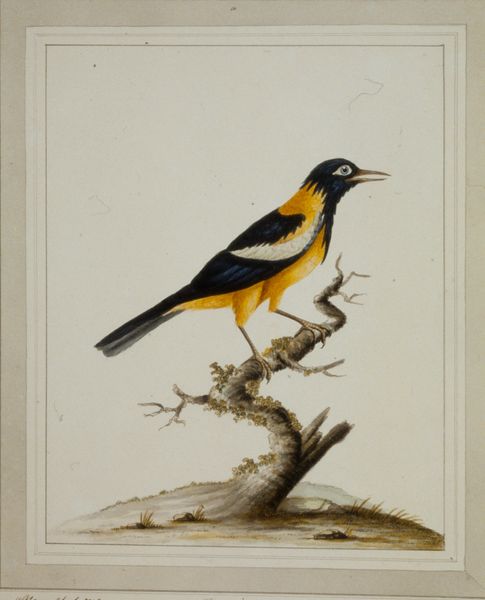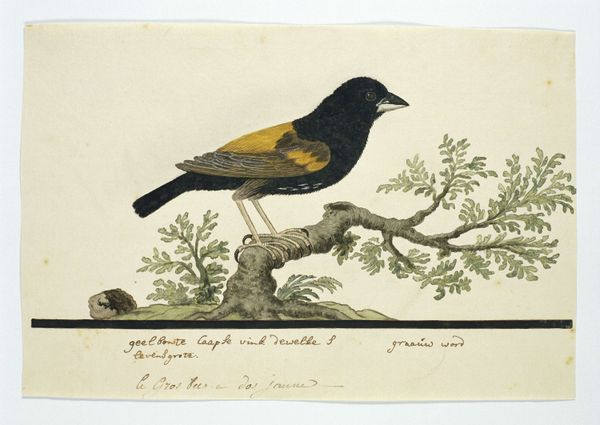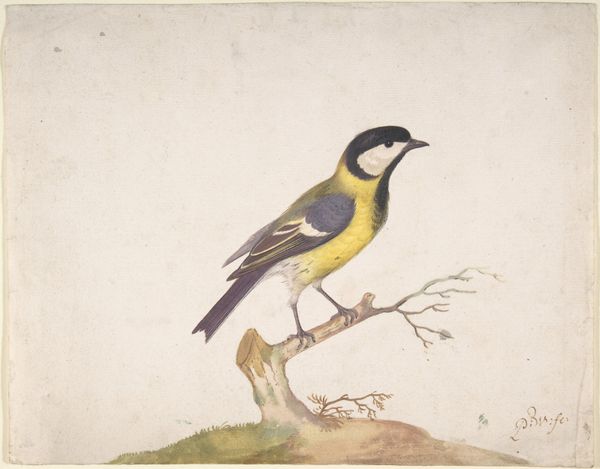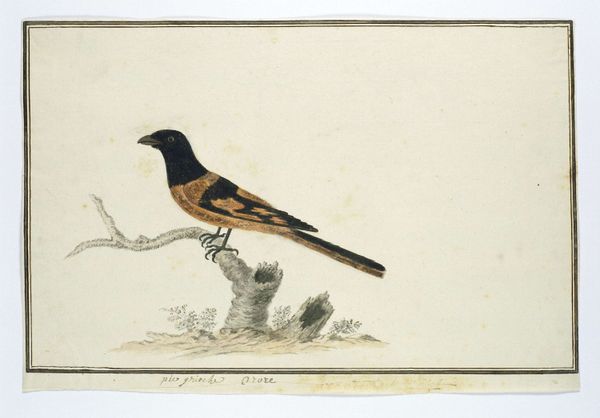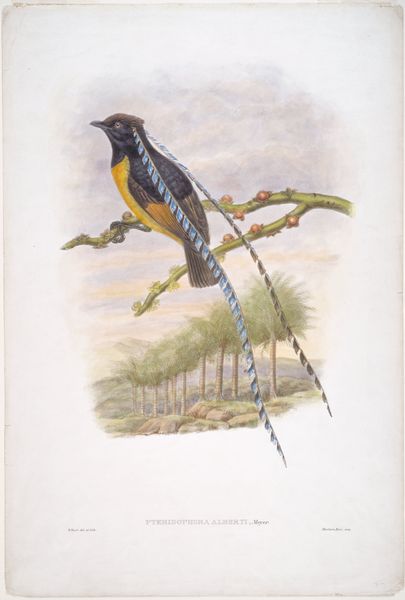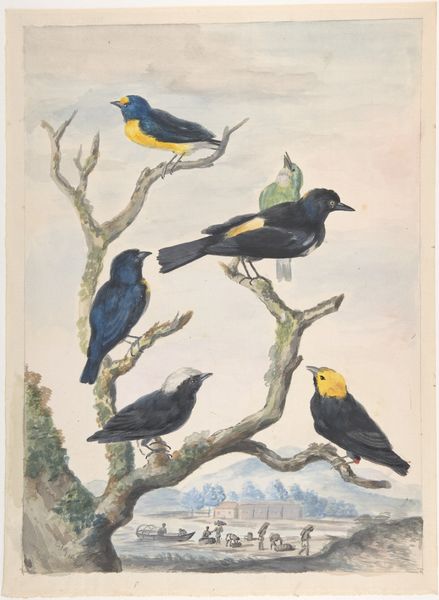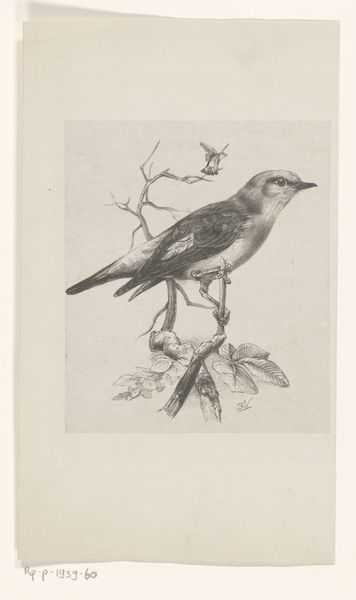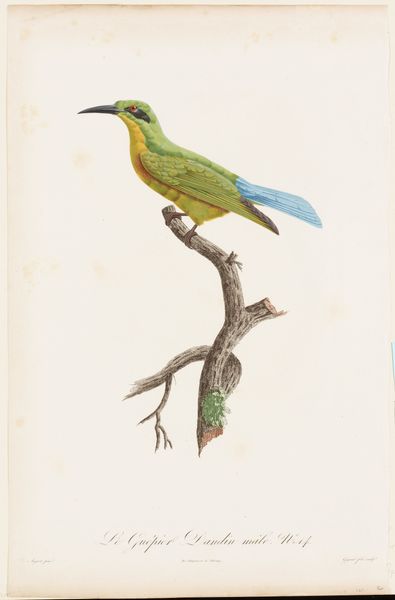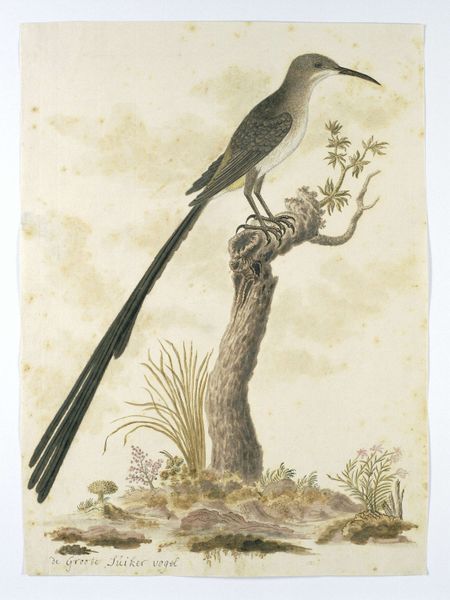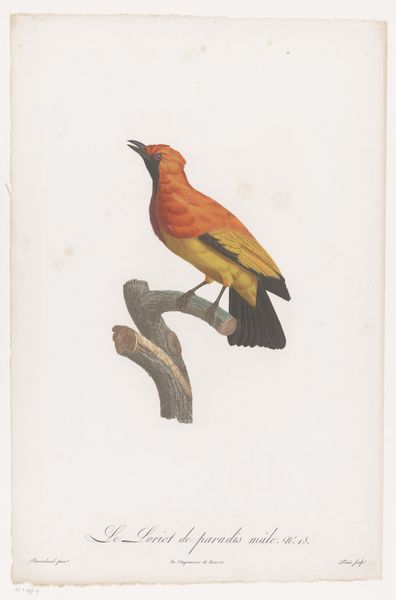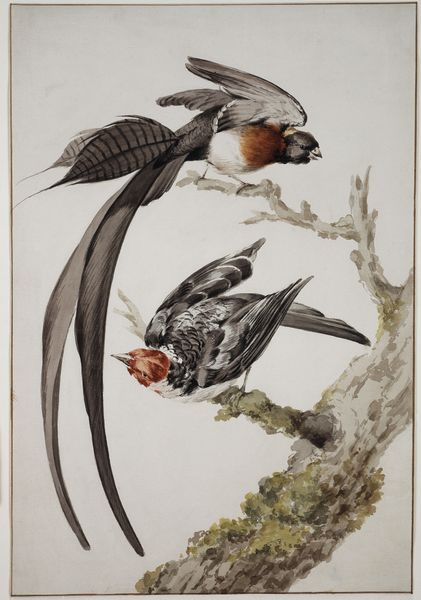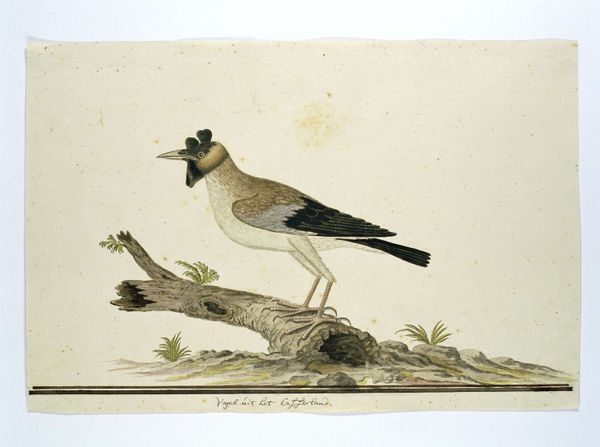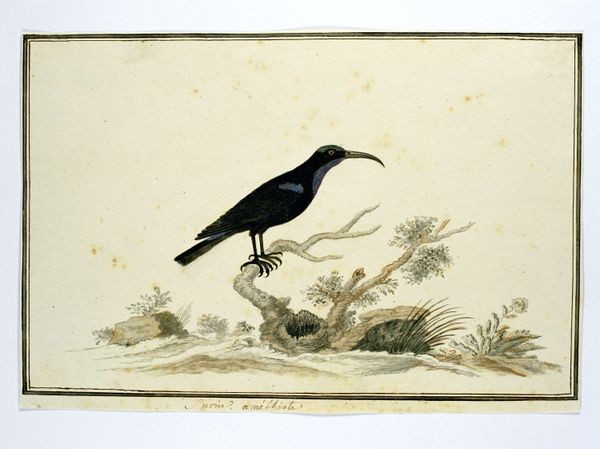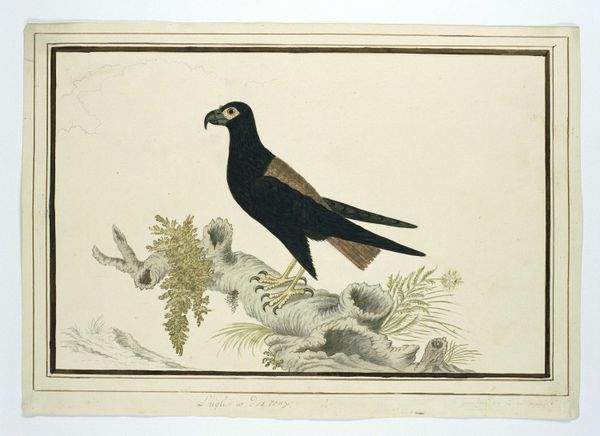
drawing, watercolor, ink, pen
#
portrait
#
drawing
#
charcoal drawing
#
watercolor
#
ink
#
animal portrait
#
pen
#
watercolour illustration
Dimensions: 11 3/4 x 9 7/8 in. (29.85 x 25.08 cm) (image)13 1/2 x 11 1/2 in. (34.29 x 29.21 cm) (sheet)
Copyright: Public Domain
Curator: This drawing is entitled "Crested Tanager," created around 1799 by William Hayes. It's a delicate rendering combining pen, ink, watercolor, and charcoal. Editor: Immediately, the stark contrast between the black plumage and the vibrant yellow crest and flank catches the eye. It's almost regal, a little defiant, perched there on the branch. Curator: Indeed. Hayes worked within a well-established tradition of ornithological illustration, part of a broader movement of scientific documentation and natural history. One must understand the historical context when approaching the artist intention. These images weren't just aesthetic; they were tools for cataloging and understanding the natural world, frequently associated with colonial expansion and exploitation. Editor: It’s true the seemingly objective gaze also operated as a way of appropriating the knowledge from the cultures that actually existed there. The bird seems more specimen than a living creature; its stance almost too studied. It almost asks if representation of wild beauty ultimately serves control. Curator: I believe Hayes had personal connection to the work being done at that moment, but those circumstances shaped how people consumed art. This bird now exists within institutional collections as much as, perhaps even more than, the Brazilian landscape. So what meaning might we see in a display such as this one here? Editor: Exactly. Hayes' technique, blending the precision of pen and ink with the softness of watercolor, mirrors that tension between observation and interpretation. The level of detail invites scrutiny and demands, I'd even say, a political position to its relationship with environmental studies and extraction of materials. The medium then seems a battle of control itself. Curator: In a sense, images such as Hayes' provide key evidence to art within certain points of historical, political and cultural landscapes. These observations are really a matter of perspective, isn't it? The way he portrays it can vary due to social backgrounds. It should also inspire reflection regarding natural spaces nowadays. Editor: It leaves me questioning the presumed neutrality of scientific illustration, pushing us to consider the power dynamics inherent in how we represent and engage with the natural world even now. Curator: Ultimately, Hayes offers not just a portrait of a bird, but a glimpse into a complex historical and cultural moment—one with lasting ramifications. Editor: It’s definitely an image that speaks volumes beyond the apparent simplicity of its subject.
Comments
No comments
Be the first to comment and join the conversation on the ultimate creative platform.
